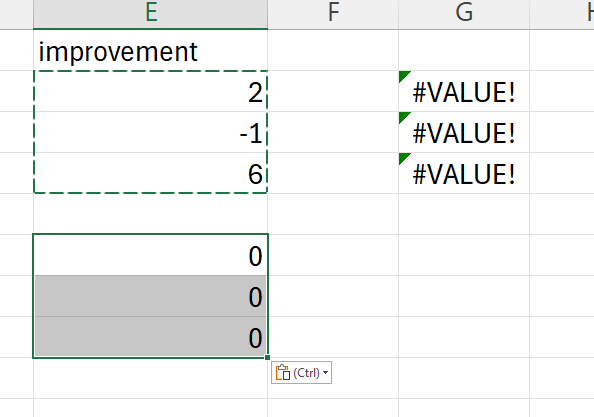This session is part of our Excel for beginners course. That’s a series of seven linked sessions, delivered on Teams, that give an introduction to Excel for people working in health and social care. The sessions are:
Together, they aim to help you develop an appropriate set of Excel skills to help your work. This session covers references and names in Excel:
No feedback found for this session
Some sample data
| Steve |
4 |
6 |
Excel 1 |
| Emma |
7 |
6 |
Excel 2 |
| Bhavin |
3 |
9 |
Excel 1 |
References
- Excel sheets are made up of cells
- cells are arranged in rows and columns
- columns have letters - like
C
- rows have numbers - like
3
- references are the ‘address’ of a particular cell - like
C3
- you can ‘point’ at a cell by using its reference
Finding a reference
- from the name box:

- or work out from the column and row labels
- always column letter, then row number
-
C3, not 3C
Using a reference
- we can write a formula that copies the value from C3 into another cell
- formulas start with an
=
- so we’ll use
= C3 to get Emma’s visit date (or whatever value you referenced)
References move
- by default, Excel references are relative
- when you move a reference, the cell that reference points to also moves

- it is possible to ‘fix’ references so that they not move
- we call these absolute references
- the
$ fixes a reference, so $C$3 is absolute 
You can name things
- almost everything in Excel can be named
- the easy way to start with that is using the name box
- names can replace references in formulas
- this is valuable when things get more complicated
You can use and manage names
- via the Name manager (
Ctrl + F3)
-
Go to (
F5)
Using a reference
- we can write a formula that copies the value from
C3 into another cell
- go to an empty cell, type
= C3, and press Enter/⏎
- that cell should now have Emma’s post-training score (or whatever value you referenced)
References move
- try copying your new block of
improvement cells around your sheet
- their value should change (almost certainly to a
#VALUE error)
- now try clicking those cells to see where the updated reference points to

Absolute references
- delete your copied blocks of cells from the last step
- now update your references by adding
$ before the letter and number
- so
C2 becomes $C$2
- you might prefer to press
F4 instead
- now copy and paste those blocks of cells again. What’s different this time?
- please delete those new blocks of cells when you’re finished
You can name things
- let’s average the
post-training score column
- in a new cell (
C5 perhaps?) add this formula:
- now name that new cell
av_score and try using it in a formula
-
= INT(av_length) would round that to the nearest whole number
You can manage those names
- find the Name manager (or press
Ctrl + F3) 
- try renaming your
av_score cell
- try making a new named range from your three
pre-training score cells
- try using the
F5 Go to interface to navigate between your named cells





